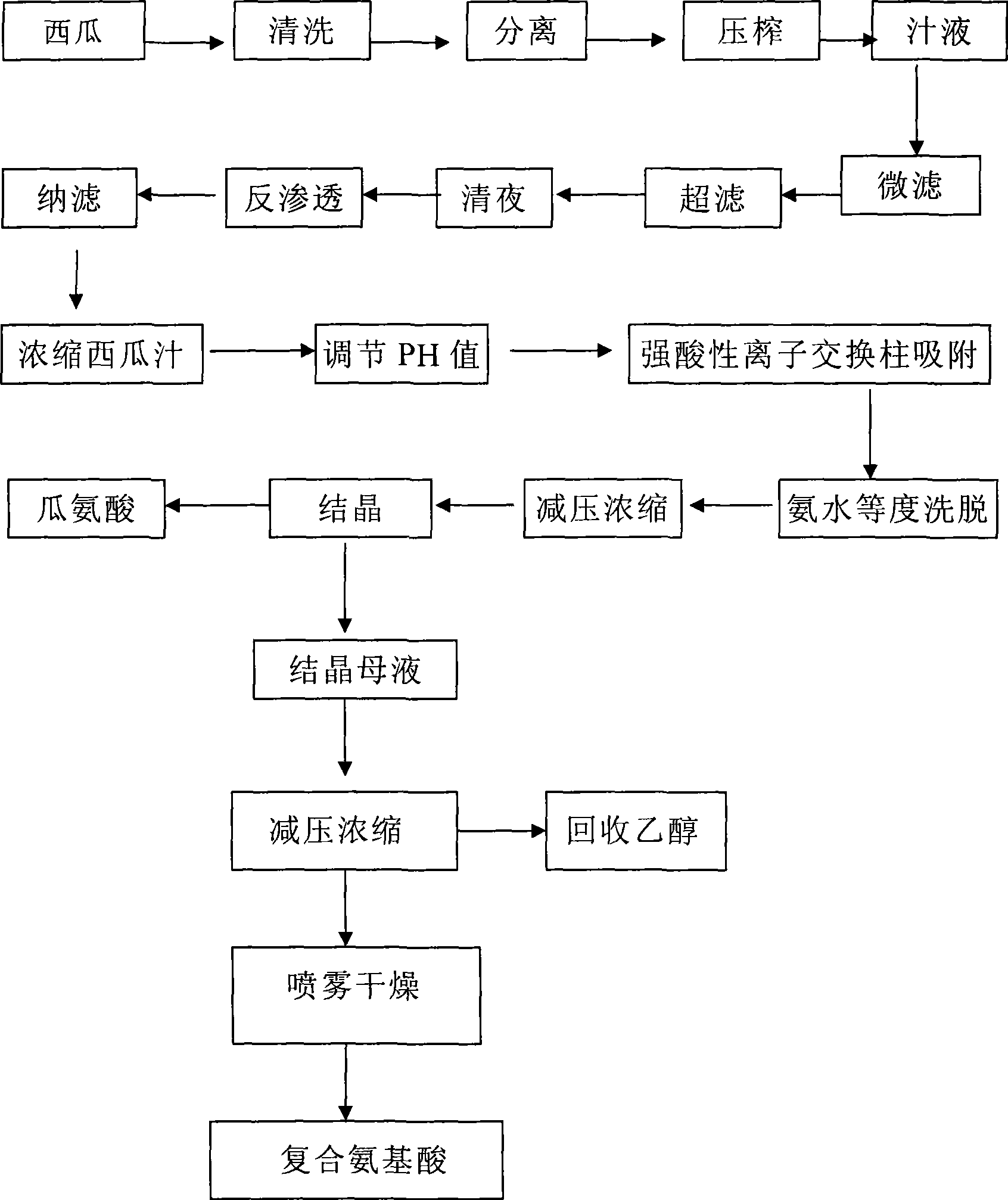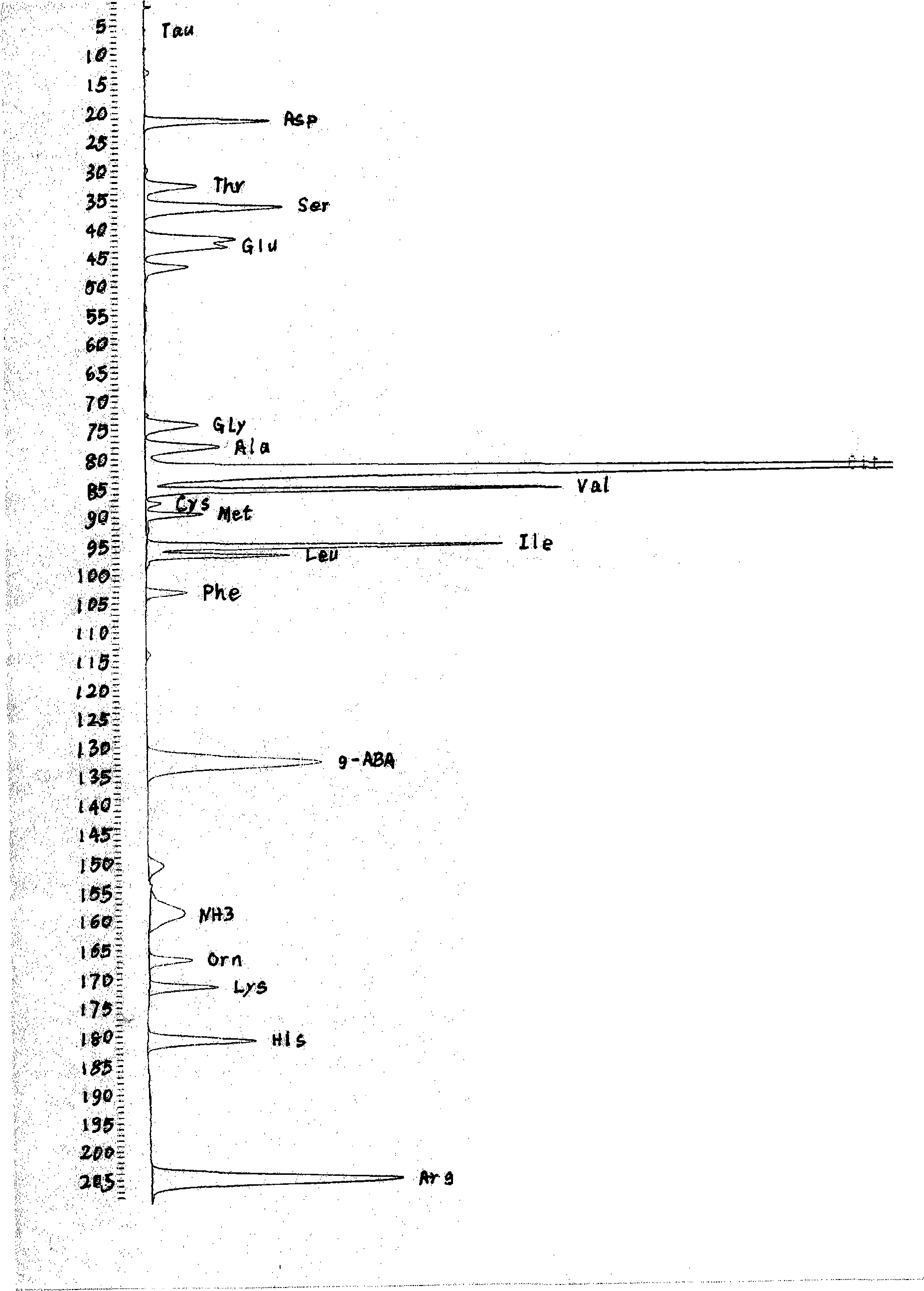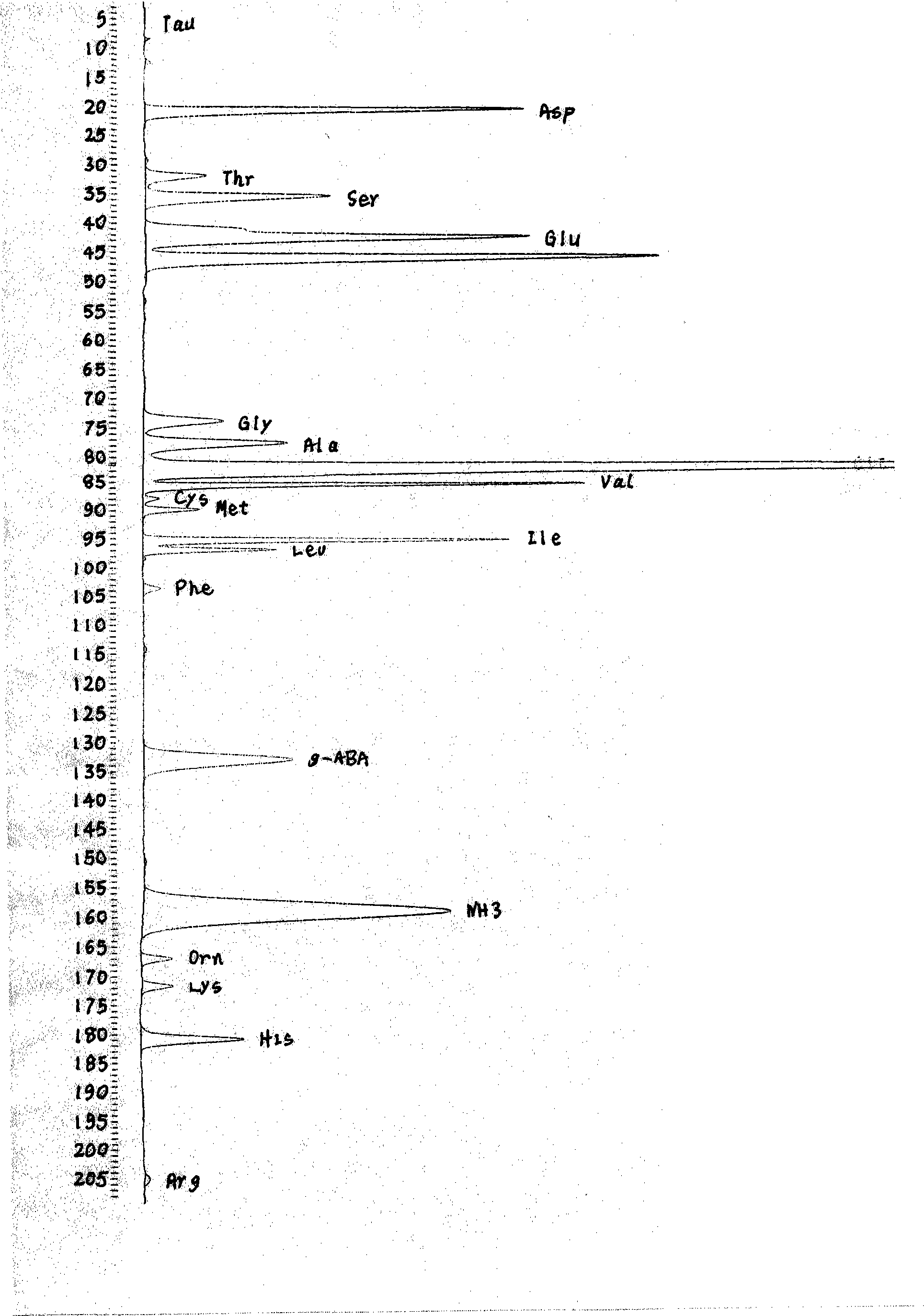Method for extracting composite aminoacid from water melon or black seed melon
A compound amino acid, amino acid technology, applied in the direction of plant protein processing, etc., to achieve the effect of simple and reasonable process, obvious safety advantages, and good product properties
- Summary
- Abstract
- Description
- Claims
- Application Information
AI Technical Summary
Problems solved by technology
Method used
Image
Examples
Embodiment 1
[0030] Embodiment 1: Take watermelon as raw material to extract compound amino acid
[0031] 1. Slicing: After washing 20 tons of watermelon with water, chop it with a watermelon chopper.
[0032] 2. Separation of skin and pulp: Use glue stick soft separator and two separation units to perform primary and secondary separation to completely separate watermelon rind and watermelon pulp.
[0033] 3. Juicing: About 6 tons of watermelon rinds are squeezed with a belt press or a plate and frame filter press to collect the juice of the melon rinds. The dried and pulverized melon rind fiber can be used in the production of watermelon fiber oral preparations.
[0034] 4. Separation: about 14 tons of watermelon pulp pass through the seed juice separator (the watermelon seed and watermelon pulp fiber and watermelon pulp juice separation machine effect is better with the watermelon pulp fiber and watermelon pulp juice developed by Xinjiang Machinery Research Institute), so that the water...
Embodiment 2
[0064] Embodiment two: take watermelon as raw material to extract compound amino acid
[0065] 1. Slicing: After washing 20 tons of watermelon with water, chop it with a watermelon chopper.
[0066] 2. Separation of skin and pulp: Use glue stick soft separator and two separation units to perform primary and secondary separation to completely separate watermelon rind and watermelon pulp.
[0067] 3. Juicing: About 6 tons of watermelon rinds are squeezed with a belt press or a plate and frame filter press to collect the juice of the melon rinds. The dried and pulverized melon rind fiber can be used in the production of watermelon fiber oral preparations.
[0068] 4. Separation: about 14 tons of watermelon pulp pass through the seed juice separator (the watermelon seed and watermelon pulp fiber and watermelon pulp juice separation machine effect is better with the watermelon pulp fiber and watermelon pulp juice developed by Xinjiang Machinery Research Institute), so that the wat...
Embodiment 3
[0082] Embodiment 3: Take watermelon as raw material to extract compound amino acid
[0083] 1. Slicing: After washing 20 tons of watermelon with water, chop it with a watermelon chopper.
[0084] 2. Separation of skin and pulp: Use glue stick soft separator and two separation units to perform primary and secondary separation to completely separate watermelon rind and watermelon pulp.
[0085] 3. Juicing: About 6 tons of watermelon rinds are squeezed with a belt press or a plate and frame filter press to collect the juice of the melon rinds. The dried and pulverized melon rind fiber can be used in the production of watermelon fiber oral preparations.
[0086] 4. Separation: about 14 tons of watermelon pulp pass through the seed juice separator (the watermelon seed and watermelon pulp fiber and watermelon pulp juice separation machine effect is better with the watermelon pulp fiber and watermelon pulp juice developed by Xinjiang Machinery Research Institute), so that the water...
PUM
 Login to View More
Login to View More Abstract
Description
Claims
Application Information
 Login to View More
Login to View More - R&D
- Intellectual Property
- Life Sciences
- Materials
- Tech Scout
- Unparalleled Data Quality
- Higher Quality Content
- 60% Fewer Hallucinations
Browse by: Latest US Patents, China's latest patents, Technical Efficacy Thesaurus, Application Domain, Technology Topic, Popular Technical Reports.
© 2025 PatSnap. All rights reserved.Legal|Privacy policy|Modern Slavery Act Transparency Statement|Sitemap|About US| Contact US: help@patsnap.com



